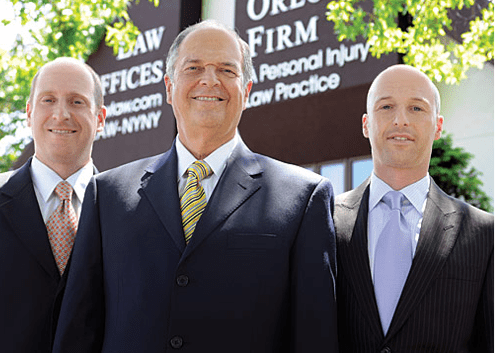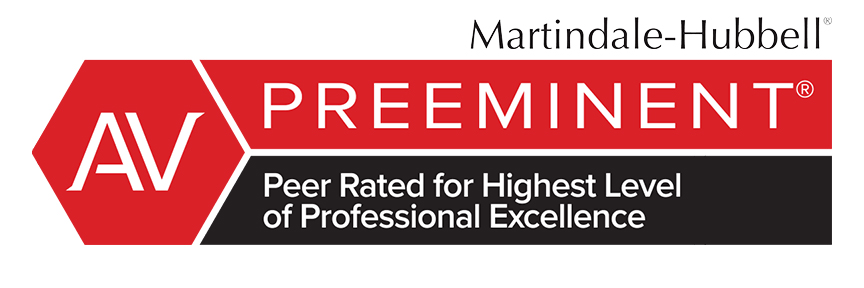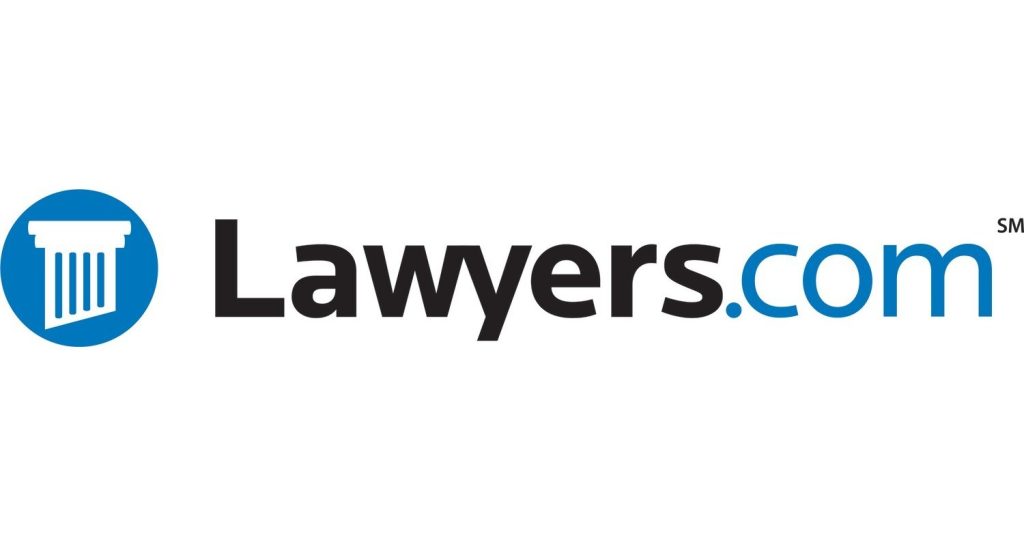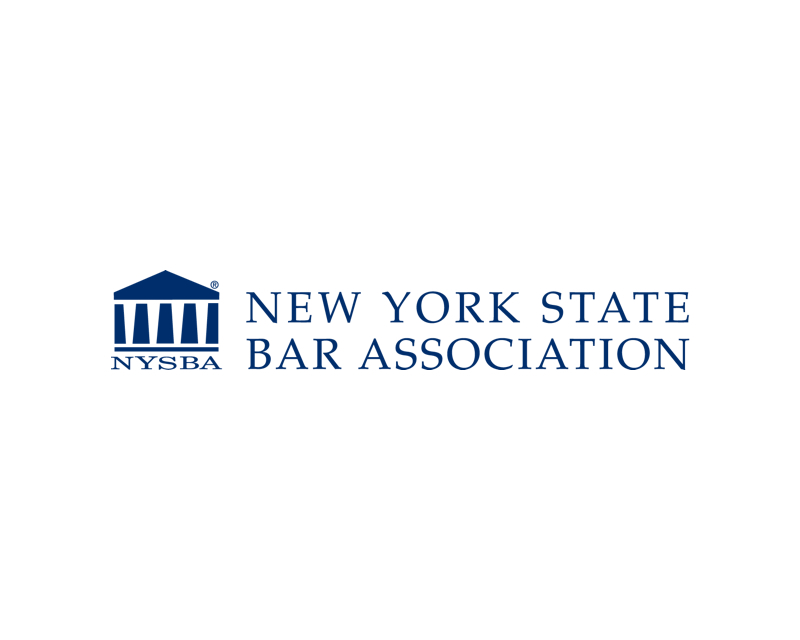The Following People Contributed to This Page
Cindy Cordova is a seasoned legal writer with over seven years of experience crafting clear, informative, and professional content for law firm websites. With a B.A. in English from Trinity Christian College, she combines her strong writing background with a deep understanding of legal topics to help firms connect with their clients through trustworthy and accessible content.
- May 20, 2025
What Is Driver Negligence and How Does It Lead to Accidents?
Quick Answer: Driver negligence occurs when a driver fails to act with the level of care that a reasonable person would exercise under similar circumstances. This can include behaviors such distracted driving or speeding which often leads to accidents by causing unsafe conditions on NYC roads. When drivers fail to follow traffic laws or pay attention, they increase the risk of collisions and injuries. Understanding negligence helps injured parties seek compensation for damages caused by careless driving.
Common Types of Driver Negligence in New York City
Driver negligence refers to when a driver fails to act with reasonable care on the road. In New York City, this carelessness can take many forms and often leads directly to accidents. Understanding the common types of driver negligence helps explain why crashes happen and how they might be prevented.
Some of the most frequent types of driver negligence in NYC include:
- Distracted Driving: This occurs when a driver’s attention is not on the road. Common distractions include texting, talking on the phone, eating, or adjusting the radio. In a busy city like New York, even a momentary distraction can cause a serious accident.
- Speeding: Driving faster than the posted speed limit or too fast for road conditions is a major cause of crashes. NYC’s crowded streets and heavy traffic make speeding especially dangerous, increasing the chance of losing control or being unable to stop in time.
- Failure to Obey Traffic Signals: Ignoring red lights, stop signs, or pedestrian signals can lead to dangerous collisions. NYC’s complex traffic flow depends on drivers following signals to keep everyone safe.
- Driving Under the Influence: Operating a vehicle while impaired by alcohol or drugs greatly reduces a driver’s ability to react and make safe decisions. Despite strict laws, impaired driving remains a serious problem in NYC.
- Fatigue and Drowsy Driving: Tired drivers have slower reaction times and reduced attention. Long commutes or late-night driving in NYC can increase the risk of accidents caused by driver fatigue.
- Improper Lane Changes and Failure to Yield: NYC’s busy streets require drivers to signal and check carefully before changing lanes or merging. Neglecting these rules can cause side collisions or dangerous merges.
- Following Too Closely: Tailgating reduces the time a driver has to stop safely. In stop-and-go NYC traffic, maintaining a safe distance is critical to avoid rear-end crashes.
- Illegal Turns and U-Turns: Making turns where prohibited or without proper caution can surprise other drivers and pedestrians, leading to accidents.
Each of these negligent behaviors increases the risk of accidents on New York City’s crowded and fast-paced roads. Drivers are legally required to operate their vehicles safely and follow traffic laws. When they fail to do so, they may be held responsible for any injuries or damages caused by their negligence.
If you or a loved one has been hurt in an accident caused by driver negligence in NYC, it is important to understand how these common types of negligence may affect your case. For assistance or to discuss your situation, please contact The Orlow Firm at (646) 647-3398.
How Distracted Driving Contributes to Accidents in NYC
Distracted driving is a major cause of accidents in New York City. It happens when a driver’s attention is not fully on the road. Even a momentary lapse can lead to serious crashes in NYC’s busy streets.
There are several common forms of distracted driving:
- Using a cellphone: Texting, calling, or using apps diverts the driver’s eyes and mind from driving.
- Eating or drinking: Taking hands off the wheel to eat or drink reduces control over the vehicle.
- Adjusting controls: Changing the radio, GPS, or climate settings takes attention away from the road.
- Talking to passengers: Engaging in conversations can distract drivers, especially if emotions run high.
- Other distractions: Looking at roadside events, grooming, or handling pets can also cause distraction.
In New York City, the risk of distracted driving is even greater due to heavy traffic, pedestrians, and complex intersections. Drivers need to be alert to many different hazards at once. When distracted, they may miss important signals like traffic lights or sudden stops.
Distracted driving contributes to accidents in several ways:
- Delayed reaction times: A distracted driver takes longer to notice and respond to hazards.
- Impaired judgment: Drivers may misjudge distances, speeds, or the actions of other road users.
- Failure to maintain lanes: Looking away can cause drifting into other lanes or off the road.
- Ignoring traffic signals: Distracted drivers might run red lights or stop signs, causing collisions.
New York State law bans texting and handheld cellphone use while driving. Yet, many drivers still engage in these behaviors, increasing the chance of accidents. Police in NYC actively enforce these rules, and violations can lead to fines and points on a driver’s license.
If you or a loved one has been injured in an accident caused by distracted driving in New York City, it is important to understand your rights. Proving that the other driver was negligent because they were distracted can help in seeking compensation for your injuries and losses.
For assistance with cases involving distracted driving accidents in NYC, you can contact The Orlow Firm at (646) 647-3398.
The Role of Speeding and Reckless Driving in NYC Crashes
Speeding and reckless driving play a significant role in causing accidents on New York City streets. When drivers exceed the speed limit or drive aggressively, they increase the chances of losing control of their vehicles. This can lead to serious crashes involving other cars, pedestrians, or cyclists.
Speeding is especially dangerous in NYC because of the city’s crowded roads and frequent traffic signals. Driving faster than the posted speed limit reduces a driver’s ability to stop quickly if something unexpected happens, like a pedestrian crossing or a sudden traffic jam. Higher speeds also make crashes more severe, increasing the risk of serious injuries or death.
Reckless driving includes behaviors like tailgating, weaving through traffic, failing to yield the right of way, and aggressive lane changes. These actions show a disregard for safety and often cause confusion or surprise for other drivers and pedestrians. In a busy city like New York, reckless driving can quickly lead to collisions because there is little room for error.
Some common examples of reckless driving in NYC include:
- Ignoring traffic signals or signs, such as running red lights or stop signs.
- Changing lanes abruptly without signaling or checking for other vehicles.
- Tailgating or following too closely behind another vehicle.
- Street racing or driving at unsafe speeds on public roads.
The combination of speeding and reckless driving is particularly harmful in New York City because of the large number of pedestrians and cyclists sharing the road. These vulnerable road users are at greater risk when drivers do not adjust their speed or driving habits to the busy urban environment.
A driver may be guilty of reckless driving if they operate a vehicle in a way that unreasonably endangers others on the road or interferes with the free and proper use of a public roadway. Reckless driving is a misdemeanor and a driver may be convicted of reckless driving if they engage in conduct such as:
- Tailgating while weaving through traffic at high speed
- Failing to yield and running multiple red lights, thereby forcing pedestrians or other drivers to take evasive action
If you or a loved one has been hurt in a crash caused by speeding or reckless driving in New York City, it is important to understand your rights. Contact The Orlow Firm at (646) 647-3398 to discuss your situation and learn how the law may protect you.
Why Failure to Obey Traffic Signals Causes Accidents
Failure to obey traffic signals is a common form of driver negligence that often leads to accidents in New York City. Traffic signals—such as red lights, stop signs, and pedestrian crossing signals—are designed to control the flow of vehicles and pedestrians. When drivers ignore or disobey these signals, it creates confusion and dangerous situations on the road.
Here are some reasons why failing to obey traffic signals causes accidents:
- Increased risk of collisions: Running a red light or stop sign can cause a driver to enter an intersection when others have the right of way. This often results in side-impact or T-bone collisions, which can cause serious injuries.
- Pedestrian dangers: Disobeying pedestrian crossing signals puts people walking at risk. In busy NYC areas, pedestrians rely on signals to cross safely. Ignoring these signals can lead to pedestrian accidents.
- Confusion and unpredictability: Traffic signals create order by telling drivers when to stop, go, or slow down. When a driver ignores signals, other drivers may not expect their actions, causing sudden braking or swerving that can trigger crashes.
- Chain reaction crashes: In congested areas like NYC, one driver running a red light can cause multiple vehicles to collide behind them. This can lead to pile-ups involving several cars.
- Reduced reaction time: Disobeying signals often means entering intersections quickly or unexpectedly. Other drivers and pedestrians have less time to react, increasing the chance of accidents.
In New York City, intersections are especially busy and complex. The high volume of vehicles, buses, cyclists, and pedestrians means that obeying traffic signals is critical for safety. Drivers who fail to stop at red lights or ignore stop signs are breaking the law and acting negligently. This negligence directly contributes to many crashes in the city.
Traffic cameras and police enforcement in NYC aim to reduce signal violations, but accidents still occur. If you or a loved one has been injured because another driver failed to obey traffic signals, you may have grounds for a personal injury claim. It is important to understand how this type of negligence affects your case and to seek legal advice about your rights.
For help with accidents caused by signal violations or other forms of driver negligence in New York City, contact The Orlow Firm at (646) 647-3398. We can provide guidance on protecting your rights and pursuing compensation.
The Impact of Fatigue and Drowsy Driving on Road Safety
Fatigue and drowsy driving are serious factors that contribute to many accidents on New York City roads. When a driver is tired or sleepy, their ability to focus and react quickly decreases, increasing the risk of a crash. This type of driver negligence is often overlooked but can be just as dangerous as distracted or impaired driving.
Driving while drowsy affects a person’s judgment, coordination, and attention. It can cause slower reaction times, difficulty staying in the lane, and even falling asleep behind the wheel. In a busy and fast-paced place like NYC, these effects can lead to collisions with other vehicles, pedestrians, or stationary objects.
Some common causes of fatigue and drowsy driving include:
- Lack of Sleep: Not getting enough rest before driving reduces alertness and slows decision-making.
- Long Hours Behind the Wheel: Professional drivers or commuters who drive for many hours without breaks are at higher risk of fatigue.
- Shift Work or Irregular Schedules: Working late nights or early mornings can disrupt normal sleep patterns, making drivers more prone to drowsiness.
- Medical Conditions: Some health issues like sleep apnea or insomnia also contribute to tiredness while driving.
In New York City, the combination of heavy traffic, complex street layouts, and frequent stops can make drowsy driving even more hazardous. For example, a fatigued driver may fail to notice a red light or a pedestrian crossing, leading to serious accidents.
Law enforcement and safety experts recognize drowsy driving as a form of negligence. Drivers have a legal duty to operate their vehicles safely, which includes being well-rested. If fatigue causes a crash, the driver can be held responsible for any injuries or damages that result.
To reduce the risk of accidents caused by fatigue, drivers should:
- Get at least 7 to 8 hours of sleep before driving, especially for long trips.
- Take regular breaks during long drives to rest and stay alert.
- Avoid driving during hours when they normally sleep, such as late at night or early morning.
- Recognize warning signs of drowsiness, like yawning, heavy eyelids, or difficulty concentrating, and stop driving immediately if they appear.
If you or a loved one has been injured in an accident caused by a tired or drowsy driver in New York City, it is important to understand that this type of negligence can form the basis of a personal injury claim. Consulting with an attorney can help you learn about your rights and options.
For assistance with accidents involving driver fatigue or other forms of negligence in NYC, you can contact The Orlow Firm at (646) 647-3398. We are available to discuss your situation and help protect your legal interests.
Legal Responsibilities of Drivers in New York City
Drivers in New York City have clear legal responsibilities designed to keep everyone on the road safe. When drivers fail to meet these duties, their negligence can lead to accidents that cause injury or property damage. Understanding these responsibilities helps explain how driver negligence contributes to crashes in NYC.
Some of the key legal responsibilities of drivers in New York City include:
- Obeying Traffic Laws: Drivers must follow all traffic signals, signs, and rules. This includes stopping at red lights, yielding the right of way, and obeying speed limits. Breaking these laws can cause dangerous situations and accidents.
- Maintaining Control of the Vehicle: Drivers must always be in control of their vehicle. This means avoiding distractions, not driving while impaired or drowsy, and adjusting speed to road conditions.
- Driving Sober: New York law prohibits driving under the influence of alcohol or drugs. Impaired drivers have slower reaction times and poor judgment, which greatly increases the risk of accidents.
- Yielding to Pedestrians and Cyclists: NYC streets are busy with pedestrians and cyclists. Drivers must watch carefully and yield when required to avoid collisions.
- Using Signals Properly: Drivers must use turn signals and brake lights to communicate their intentions. Failure to signal can confuse other drivers and lead to crashes.
- Following Safe Distance Rules: Maintaining a safe distance from other vehicles gives drivers time to react to sudden stops or hazards. Tailgating is illegal and a common cause of rear-end collisions.
- Regular Vehicle Maintenance: Drivers are responsible for keeping their vehicles in safe working order. Faulty brakes, tires, or lights can contribute to accidents.
In New York City, traffic congestion and heavy pedestrian activity make these responsibilities even more critical. When a driver neglects these duties, it can directly cause accidents.
Legally, negligence means a driver failed to act as a reasonable person would under similar circumstances. To hold a driver responsible for an accident, it must be shown they did not meet their legal duties. This includes proving:
- Duty of Care: The driver had a legal obligation to drive safely.
- Breach of Duty: The driver broke that duty by acting carelessly or recklessly.
- Cause: The breach directly caused the accident and injuries.
- Damages: The accident resulted in actual harm, such as injury or property damage.
New York’s traffic laws and regulations set the standard for what is expected from drivers. When traffic laws are broken, this may serve as strong evidence of negligence, especially if the violation directly contributed to the accident. Understanding these legal responsibilities helps victims and their families recognize when driver negligence may have contributed to an accident in New York City.
If you or a loved one has been injured due to a driver’s failure to meet these responsibilities, it is important to seek legal advice to protect your rights. For assistance, you can contact The Orlow Firm at (646) 647-3398 to discuss your situation and learn more about your options.
How Negligence Is Proved in NYC Accident Claims
Proving negligence in a New York City (NYC) accident claim involves showing that a driver failed to act with reasonable care, and that failure caused the accident and resulting injuries. Suggested edit: Negligence means a driver failed to exercise reasonable care, which resulted in harm to others. This can include careless actions or violating traffic laws. To succeed in a claim, these elements must be established:
- Duty of Care: Every driver in NYC has a legal responsibility to drive safely and follow traffic laws. This duty means they must act in a way that avoids causing harm to others on the road.
- Breach of Duty: The driver must have broken this duty. For example, speeding, running a red light, or texting while driving are breaches of duty because they show careless behavior.
- Causation: The breach must directly cause the accident. It is not enough to show the driver was careless; their actions must have led to the crash and injuries.
- Damages: The accident must have caused actual harm, such as physical injuries, medical bills, or property damage.
To prove these elements, evidence is key. Common types of evidence used in NYC accident claims include:
- Police Reports: These official reports often include details about the accident, statements from drivers and witnesses, and who the officer believed was at fault.
- Witness Statements: People who saw the accident can provide important information about how it happened and whether the driver was negligent.
- Traffic Camera or Surveillance Footage: In NYC, many intersections have cameras that may have recorded the accident. Video evidence can clearly show driver behavior before and during the crash.
- Photographs: Pictures of the accident scene, vehicle damage, and any visible injuries help document the situation and support claims.
- Medical Records: These prove the extent of injuries caused by the accident and connect them to the crash.
- Expert Analysis: Sometimes accident reconstruction experts are used to explain how negligence caused the collision.
New York’s no-fault insurance system means your own insurance usually pays for medical bills and lost wages first, no matter who caused the accident. But proving negligence is important if you want to pursue compensation beyond these basic benefits. For example, if your injuries meet New York’s “serious injury” threshold, you may sue the negligent driver for additional damages like pain and suffering.
Because NYC is busy and complex, proving negligence often requires careful collection and review of evidence. It is important to act quickly after an accident to gather information and protect your rights. If you or a loved one has been hurt by a negligent driver in New York City, calling The Orlow Firm at (646) 647-3398 can help you understand your claim and what evidence you will need to support it.
What to Do If You Are Injured by a Negligent Driver in NYC
If you are injured by a negligent driver in New York City, it is important to take specific steps to protect your health and your legal rights. Knowing what to do right after the accident can help you get the care you need and may improve your chances of recovering compensation.
- Get Medical Attention Immediately – Even if your injuries seem minor, see a doctor as soon as possible. Some injuries, like internal bleeding or concussions, may not be obvious right away. Prompt medical care documents your injuries, which is important for any insurance or legal claims.
- Report the Accident to the Police – Call 911 or the local police to report the accident. A police report creates an official record of the incident, including details about the drivers, witnesses, and the scene. This report can be crucial when proving negligence later.
- Exchange Information with the Other Driver – Get the name, contact information, insurance details, and license plate number of the other driver. If there are witnesses, try to get their names and phone numbers as well. This information will be useful when filing insurance claims or if legal action becomes necessary.
- Document the Accident Scene – If you are able, take photos or videos of the accident scene, vehicle damage, road conditions, traffic signs, and any visible injuries. This evidence can support your claim by showing how the accident happened.
- Notify Your Insurance Company – Report the accident to your insurance provider as soon as possible. In New York, you also need to file a no-fault insurance claim to cover medical bills and lost wages. Keep a record of all communications with your insurer.
- Keep Records of All Medical Treatment and Expenses – Keep copies of all medical bills, treatment records, prescriptions, and related expenses. Also, track any time you miss work or incur other accident-related costs. These documents help prove the extent of your damages.
- Understand New York’s No-Fault Insurance System – New York is a no-fault state, which means your own insurance covers your medical bills and certain losses regardless of who caused the crash. However, if your injuries are serious enough, you may be able to file a lawsuit against the negligent driver for additional damages.
- Consult with a Personal Injury Attorney – While not required, speaking with a personal injury lawyer can help you understand your rights and options. An attorney can guide you through the claims process, help gather evidence, and advocate for fair compensation if you decide to pursue a case.
- Avoid Discussing Fault or Settling Quickly – Do not admit fault or agree to any settlement offers without fully understanding your rights. Insurance companies may try to settle claims quickly for less than you deserve. Getting legal advice before making decisions can protect your interests.
- Follow All Medical Advice and Attend All Appointments – Following your doctor’s treatment plan not only helps your recovery but also strengthens your case by showing you took your injuries seriously.
Being injured by a negligent driver in New York City can be stressful and confusing. Taking these steps can help ensure your safety, protect your rights, and support any claim you may need to make. If you have questions or need assistance after an accident, contact The Orlow Firm at (646) 647-3398 for guidance tailored to your situation.
Understanding Comparative Negligence in New York Traffic Accidents
In New York traffic accident cases, comparative negligence is a legal principle used to determine how much fault each party bears for the accident. If more than one person is partially responsible, the law allows damages to be divided based on each party’s percentage of fault—so even if you were partly at fault, you may still recover compensation, just reduced by your share of responsibility.
Unlike some states that use a strict “all or nothing” approach, New York follows a pure comparative negligence system. This means even if you were partly at fault for the accident, you can still recover money for your injuries. However, your compensation will be reduced by your percentage of fault.
For example, if you were found to be 30% responsible for a car crash and the other driver 70%, and your total damages amount to $100,000, you could recover $70,000 (which is 70% of the total damages). The court or insurance company will assess evidence like witness statements, police reports, and accident details to decide the percentage of fault for each party.
Here are some key points about comparative negligence in New York traffic accidents:
- Both parties can share fault. Even if the other driver was careless, you could have made mistakes too, like not paying attention or failing to stop at a light.
- Your damages are reduced by your share of fault. If you are partly responsible, the amount you receive will be lowered accordingly.
- Comparative negligence applies to all types of motor vehicle accidents. This includes car crashes, motorcycle accidents, bicycle collisions, and pedestrian injuries in NYC.
- It encourages fair outcomes. The system aims to assign blame realistically based on each driver’s actions, rather than punishing someone entirely for a shared mistake.
In busy New York City streets, accidents often involve multiple factors and shared responsibility. For example, a driver might run a red light while a pedestrian crosses improperly. Both could be partially at fault, and comparative negligence helps sort out who pays what.
Understanding comparative negligence is important if you are involved in a NYC traffic accident. It affects how much compensation you may receive and how your case is handled. If you have questions about fault or need assistance with an accident claim, calling The Orlow Firm at (646) 647-3398 can help you learn more about your rights and options.
Contact The Orlow Firm For Assistance With Car Accident Injuries

If you have questions or need guidance, call The Orlow Firm at (646) 647-3398 to discuss your situation with a caring legal team familiar with New York’s laws and procedures. We offer free case evaluations and if we determine that you have a case, we work on a contingency fee basis meaning you don’t have to pay for anything unless we win.
The Following People Contributed to This Page
Cindy Cordova is a seasoned legal writer with over seven years of experience crafting clear, informative, and professional content for law firm websites. With a B.A. in English from Trinity Christian College, she combines her strong writing background with a deep understanding of legal topics to help firms connect with their clients through trustworthy and accessible content.










